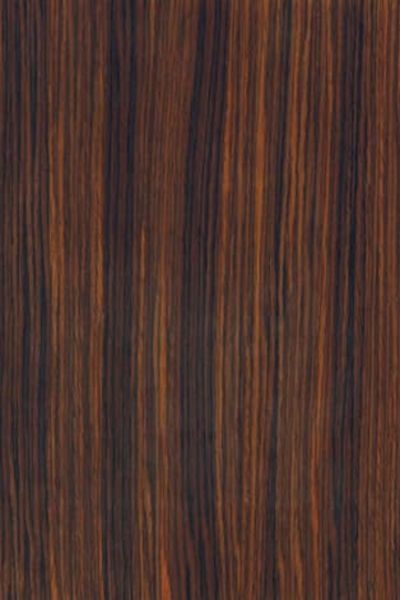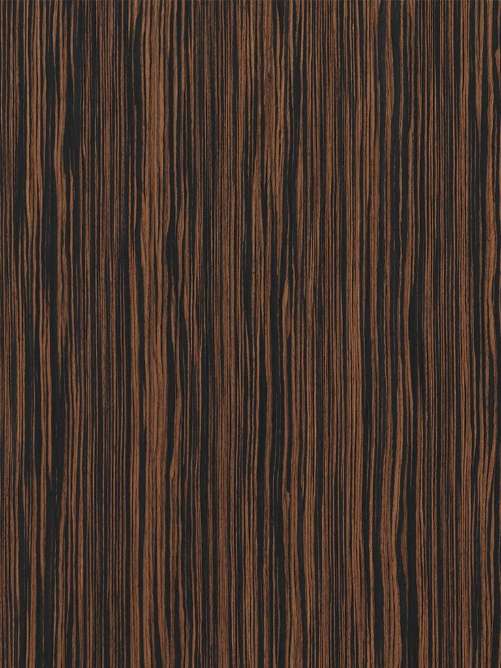-
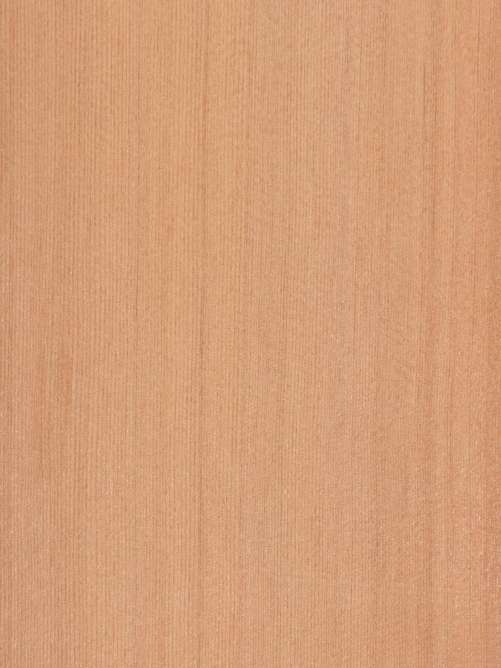 Thousands of centuries ago, Lebanese cedar was one of the world’s most precious woods, used in the construction of ancient temples and palaces. Today, this beautiful, decorative wood is now primarily grown in England and France. Rare and highly prized, most logs are produced by local European veneer merchants with local knowledge of the availability of this exceptional veneer. Learn About Veneer Cut & Matching
Thousands of centuries ago, Lebanese cedar was one of the world’s most precious woods, used in the construction of ancient temples and palaces. Today, this beautiful, decorative wood is now primarily grown in England and France. Rare and highly prized, most logs are produced by local European veneer merchants with local knowledge of the availability of this exceptional veneer. Learn About Veneer Cut & Matching -
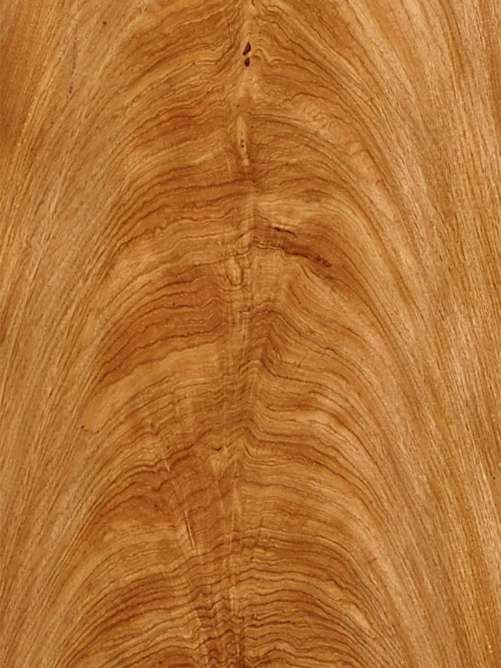 Cerejiera is a South American wood particularly prized in crotch veneer—a figure that develops when two branches or trunks are knit together as they grow (sometimes called a plume or feather pattern). The pyramid-like pattern is lively, rich in contrast, and fascinating to behold. This rare veneer is sought after for high-end furniture and as a featured accent in architectural interiors. Learn About Veneer Cut & Matching
Cerejiera is a South American wood particularly prized in crotch veneer—a figure that develops when two branches or trunks are knit together as they grow (sometimes called a plume or feather pattern). The pyramid-like pattern is lively, rich in contrast, and fascinating to behold. This rare veneer is sought after for high-end furniture and as a featured accent in architectural interiors. Learn About Veneer Cut & Matching -
 American cherry is a timeless and elegant veneer that has a satiny finish and fine, lustrous grain marked with natural pitch flecks and small gum pockets. Typically darker than European cherry, the veneer can vary widely in color from pale pink to reddish-brown. Flat cut, it produces a beautiful cathedral pattern. Figured, it exhibits a fine fiddle back or rope figure. Learn About Veneer Cut & Matching
American cherry is a timeless and elegant veneer that has a satiny finish and fine, lustrous grain marked with natural pitch flecks and small gum pockets. Typically darker than European cherry, the veneer can vary widely in color from pale pink to reddish-brown. Flat cut, it produces a beautiful cathedral pattern. Figured, it exhibits a fine fiddle back or rope figure. Learn About Veneer Cut & Matching -
 American cherry is a timeless and elegant veneer that has a satiny finish and fine, lustrous grain marked with natural pitch flecks and small gum pockets. Typically darker than European cherry, the veneer can vary widely in color from pale pink to reddish-brown. Flat cut, it produces a beautiful cathedral pattern. Figured, it exhibits a fine fiddle back or rope figure. Learn About Veneer Cut & Matching
American cherry is a timeless and elegant veneer that has a satiny finish and fine, lustrous grain marked with natural pitch flecks and small gum pockets. Typically darker than European cherry, the veneer can vary widely in color from pale pink to reddish-brown. Flat cut, it produces a beautiful cathedral pattern. Figured, it exhibits a fine fiddle back or rope figure. Learn About Veneer Cut & Matching -
 Brookside Veneers, Produced by Alpi Spa. Learn About Veneer Cut & Matching
Brookside Veneers, Produced by Alpi Spa. Learn About Veneer Cut & Matching -
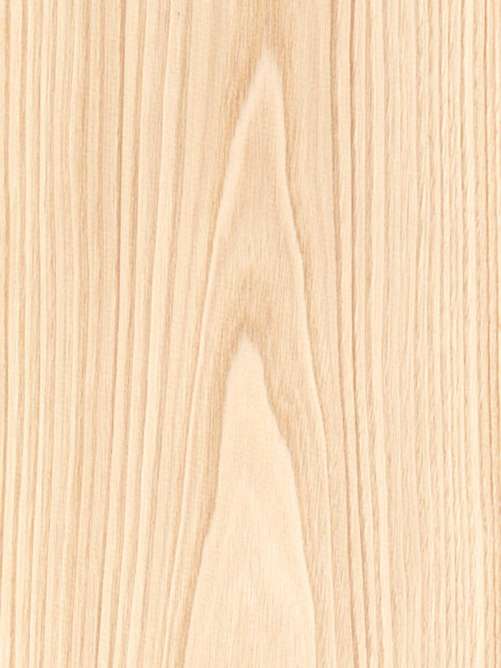 Brought to Europe by invading Romans, chestnut loves the warmth and so it’s apt that it’s commonly found in the wine-growing regions across Europe and Asia. The veneer is yellow to dark brown with a strong grain pattern similar to oak, elm, or ash. The grain is straight with a somewhat coarse texture. European chestnut accepts stain readily and finishes easily. Learn About Veneer Cut & Matching
Brought to Europe by invading Romans, chestnut loves the warmth and so it’s apt that it’s commonly found in the wine-growing regions across Europe and Asia. The veneer is yellow to dark brown with a strong grain pattern similar to oak, elm, or ash. The grain is straight with a somewhat coarse texture. European chestnut accepts stain readily and finishes easily. Learn About Veneer Cut & Matching -
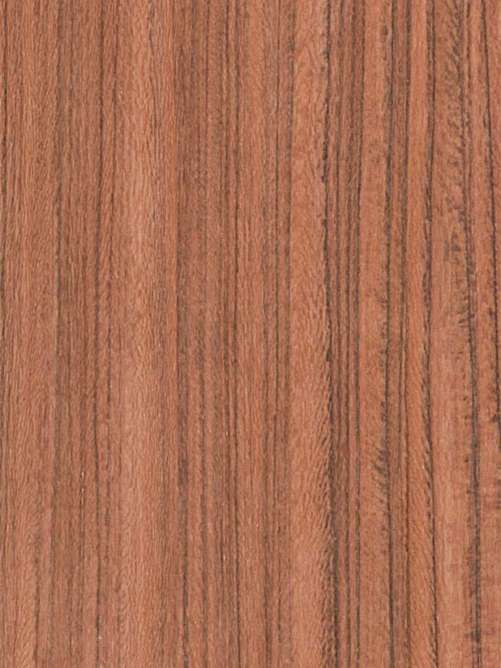 Dillenia is a canopy tree that grows over 100’ tall in the Malaysian archipelago—with straight, branch-free, trunks of 80’ and more, and buttresses up to 12’ high. The heartwood is a rich reddish-brown with an occasional purple tinge. The sapwood is wide, orange-brown to pink, and subtly defined. Conspicuous medullary rays give this wood a lacy and lustrous surface in the quarter cut veneer. Learn About Veneer Cut & Matching
Dillenia is a canopy tree that grows over 100’ tall in the Malaysian archipelago—with straight, branch-free, trunks of 80’ and more, and buttresses up to 12’ high. The heartwood is a rich reddish-brown with an occasional purple tinge. The sapwood is wide, orange-brown to pink, and subtly defined. Conspicuous medullary rays give this wood a lacy and lustrous surface in the quarter cut veneer. Learn About Veneer Cut & Matching -
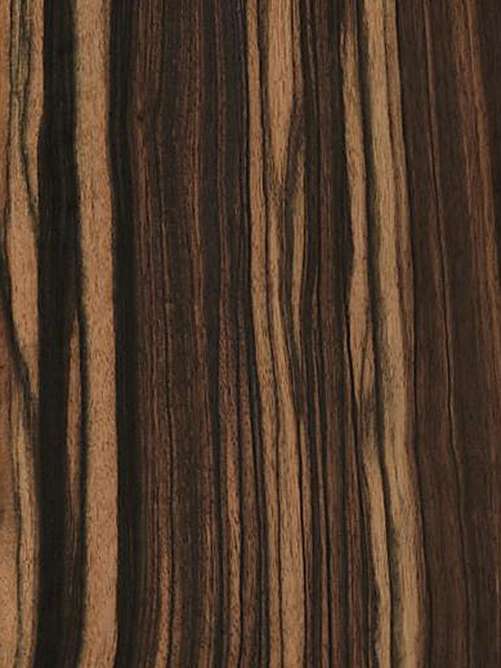 While there are many ebonies, Macassar ebony is the best known and most commercially significant. This dramatic, bold wood is nearly black in color with thin, contrasting yellow-brown stripes and a beautiful sheen. Because the tree is small, the veneer is rare, precious, and highly sought after for cabinetry and architectural millwork. Also available in recon. Learn About Veneer Cut & Matching
While there are many ebonies, Macassar ebony is the best known and most commercially significant. This dramatic, bold wood is nearly black in color with thin, contrasting yellow-brown stripes and a beautiful sheen. Because the tree is small, the veneer is rare, precious, and highly sought after for cabinetry and architectural millwork. Also available in recon. Learn About Veneer Cut & Matching -
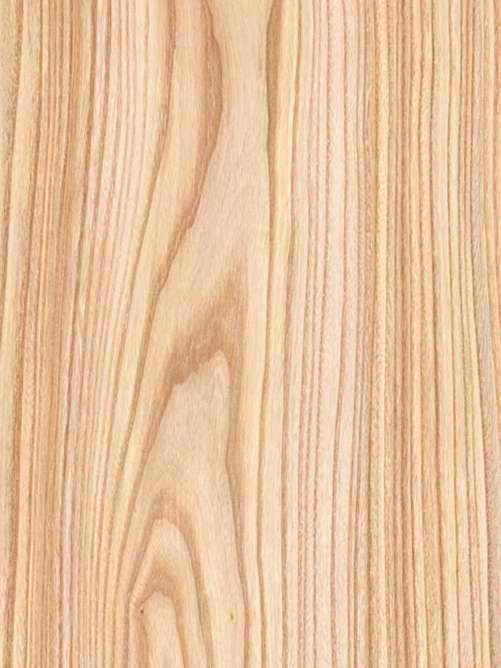 Red elm has a lively, decorative grain and a pale reddish-brown color interspersed with lovely light effects that result from wood’s medullary rays. Found primarily around the Great Lakes region, (and commonly referred to as slippery elm in tree form) this elegant domestic is a hardy survivor of the Dutch elm disease that wiped out millions of elms worldwide. Learn About Veneer Cut & Matching
Red elm has a lively, decorative grain and a pale reddish-brown color interspersed with lovely light effects that result from wood’s medullary rays. Found primarily around the Great Lakes region, (and commonly referred to as slippery elm in tree form) this elegant domestic is a hardy survivor of the Dutch elm disease that wiped out millions of elms worldwide. Learn About Veneer Cut & Matching -
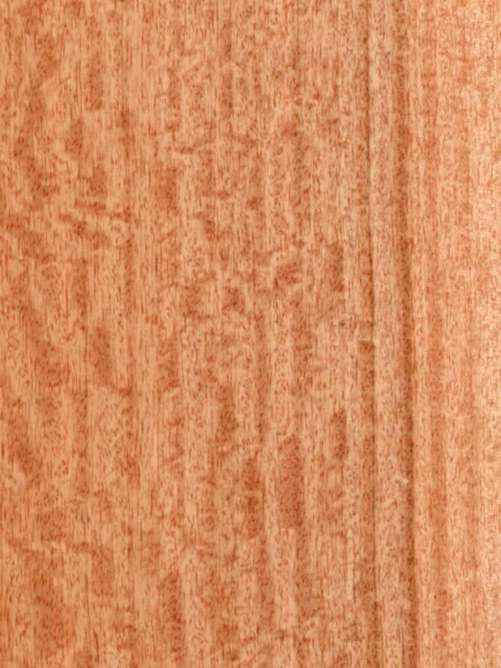 While most Etimoe trees are tapped for rubber, untapped trees are often sliced to produce this rare and striking veneer. The light red-brown to grey-brown wood has a straight grain, often with striking black-red veins or stripes, and a fine, even, lustrous texture. Etimoe is available in large sizes and in a variety of figures, most commonly curly and fiddleback. Learn About Veneer Cut & Matching
While most Etimoe trees are tapped for rubber, untapped trees are often sliced to produce this rare and striking veneer. The light red-brown to grey-brown wood has a straight grain, often with striking black-red veins or stripes, and a fine, even, lustrous texture. Etimoe is available in large sizes and in a variety of figures, most commonly curly and fiddleback. Learn About Veneer Cut & Matching -
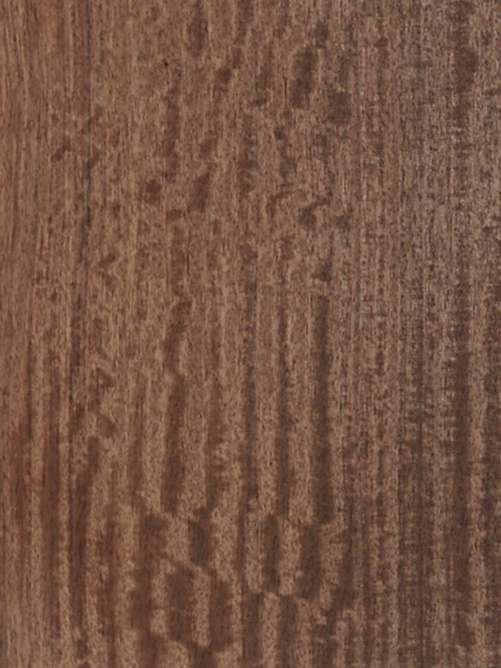 While most Etimoe trees are tapped for rubber, untapped trees are often sliced to produce this rare and striking veneer. The light red-brown to grey-brown wood has a straight grain, often with striking black-red veins or stripes, and a fine, even, lustrous texture. Etimoe is available in large sizes and in a variety of figures, most commonly curly and fiddleback. Learn About Veneer Cut & Matching
While most Etimoe trees are tapped for rubber, untapped trees are often sliced to produce this rare and striking veneer. The light red-brown to grey-brown wood has a straight grain, often with striking black-red veins or stripes, and a fine, even, lustrous texture. Etimoe is available in large sizes and in a variety of figures, most commonly curly and fiddleback. Learn About Veneer Cut & Matching -
 While most Etimoe trees are tapped for rubber, untapped trees are often sliced to produce this rare and striking veneer. The light red-brown to grey-brown wood has a straight grain, often with striking black-red veins or stripes, and a fine, even, lustrous texture. Etimoe is available in large sizes and in a variety of figures, most commonly curly and fiddleback. Learn About Veneer Cut & Matching
While most Etimoe trees are tapped for rubber, untapped trees are often sliced to produce this rare and striking veneer. The light red-brown to grey-brown wood has a straight grain, often with striking black-red veins or stripes, and a fine, even, lustrous texture. Etimoe is available in large sizes and in a variety of figures, most commonly curly and fiddleback. Learn About Veneer Cut & Matching -
 While most Etimoe trees are tapped for rubber, untapped trees are often sliced to produce this rare and striking veneer. The light red-brown to grey-brown wood has a straight grain, often with striking black-red veins or stripes, and a fine, even, lustrous texture. Etimoe is available in large sizes and in a variety of figures, most commonly curly and fiddleback. Learn About Veneer Cut & Matching
While most Etimoe trees are tapped for rubber, untapped trees are often sliced to produce this rare and striking veneer. The light red-brown to grey-brown wood has a straight grain, often with striking black-red veins or stripes, and a fine, even, lustrous texture. Etimoe is available in large sizes and in a variety of figures, most commonly curly and fiddleback. Learn About Veneer Cut & Matching -
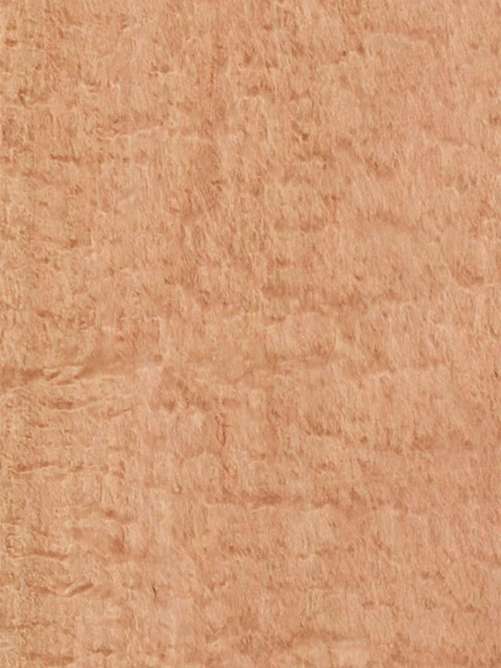 Eucalyptus is a lively veneer prized for the exotic, shimmering ripple effect in its grain. It’s available in a wide range of colors in its natural state—as well as a rich chocolate-brown when fumed, replicating the look of rich African or tropical woods. Eucalyptus produces a range of outstanding figures—most notably a strong fiddle back or bee’s wing figure—and stunning burls that are typically larger than most burls, producing well-sized sheets of rotary cut veneer. Also available in the rough cut. Learn About Veneer Cut & Matching
Eucalyptus is a lively veneer prized for the exotic, shimmering ripple effect in its grain. It’s available in a wide range of colors in its natural state—as well as a rich chocolate-brown when fumed, replicating the look of rich African or tropical woods. Eucalyptus produces a range of outstanding figures—most notably a strong fiddle back or bee’s wing figure—and stunning burls that are typically larger than most burls, producing well-sized sheets of rotary cut veneer. Also available in the rough cut. Learn About Veneer Cut & Matching -
 Eucalyptus is a lively veneer prized for the exotic, shimmering ripple effect in its grain. It’s available in a wide range of colors in its natural state—as well as a rich chocolate-brown when fumed, replicating the look of rich African or tropical woods. Eucalyptus produces a range of outstanding figures—most notably a strong fiddle back or bee’s wing figure—and stunning burls that are typically larger than most burls, producing well-sized sheets of rotary cut veneer. Also available in the rough cut. Learn About Veneer Cut & Matching
Eucalyptus is a lively veneer prized for the exotic, shimmering ripple effect in its grain. It’s available in a wide range of colors in its natural state—as well as a rich chocolate-brown when fumed, replicating the look of rich African or tropical woods. Eucalyptus produces a range of outstanding figures—most notably a strong fiddle back or bee’s wing figure—and stunning burls that are typically larger than most burls, producing well-sized sheets of rotary cut veneer. Also available in the rough cut. Learn About Veneer Cut & Matching -
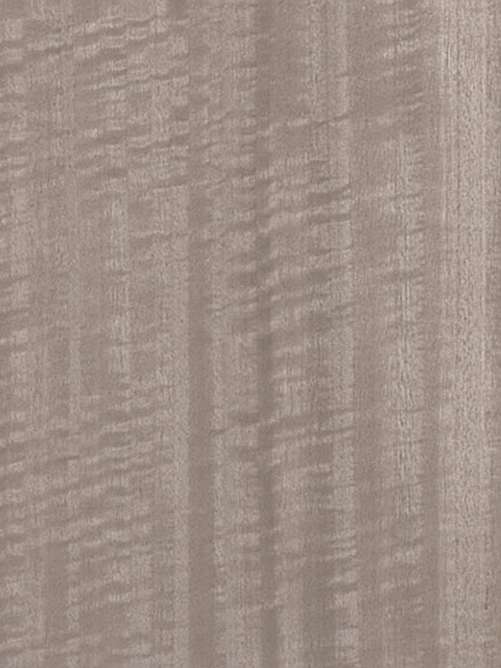 Eucalyptus is a lively veneer prized for the exotic, shimmering ripple effect in its grain. It’s available in a wide range of colors in its natural state—as well as a rich chocolate-brown when fumed, replicating the look of rich African or tropical woods. Eucalyptus produces a range of outstanding figures—most notably a strong fiddle back or bee’s wing figure—and stunning burls that are typically larger than most burls, producing well-sized sheets of rotary cut veneer. Also available in the rough cut. Learn About Veneer Cut & Matching
Eucalyptus is a lively veneer prized for the exotic, shimmering ripple effect in its grain. It’s available in a wide range of colors in its natural state—as well as a rich chocolate-brown when fumed, replicating the look of rich African or tropical woods. Eucalyptus produces a range of outstanding figures—most notably a strong fiddle back or bee’s wing figure—and stunning burls that are typically larger than most burls, producing well-sized sheets of rotary cut veneer. Also available in the rough cut. Learn About Veneer Cut & Matching -
 Eucalyptus is a lively veneer prized for the exotic, shimmering ripple effect in its grain. It’s available in a wide range of colors in its natural state—as well as a rich chocolate-brown when fumed, replicating the look of rich African or tropical woods. Eucalyptus produces a range of outstanding figures—most notably a strong fiddleback or bee’s wing figure—and stunning burls that are typically larger than most burls, producing well-sized sheets of rotary cut veneer. Also available in rough cut.
Eucalyptus is a lively veneer prized for the exotic, shimmering ripple effect in its grain. It’s available in a wide range of colors in its natural state—as well as a rich chocolate-brown when fumed, replicating the look of rich African or tropical woods. Eucalyptus produces a range of outstanding figures—most notably a strong fiddleback or bee’s wing figure—and stunning burls that are typically larger than most burls, producing well-sized sheets of rotary cut veneer. Also available in rough cut. -
 Eucalyptus is a lively veneer prized for the exotic, shimmering ripple effect in its grain. It’s available in a wide range of colors in its natural state—as well as a rich chocolate-brown when fumed, replicating the look of rich African or tropical woods. Eucalyptus produces a range of outstanding figures—most notably a strong fiddle back or bee’s wing figure—and stunning burls that are typically larger than most burls, producing well-sized sheets of rotary cut veneer. Also available in the rough cut. Learn About Veneer Cut & Matching
Eucalyptus is a lively veneer prized for the exotic, shimmering ripple effect in its grain. It’s available in a wide range of colors in its natural state—as well as a rich chocolate-brown when fumed, replicating the look of rich African or tropical woods. Eucalyptus produces a range of outstanding figures—most notably a strong fiddle back or bee’s wing figure—and stunning burls that are typically larger than most burls, producing well-sized sheets of rotary cut veneer. Also available in the rough cut. Learn About Veneer Cut & Matching -
 The rustic character of this wood works well in both contemporary and arcadian settings. The vivid, contrasting red-yellow stripe is typically straight, even, and seldom, if ever, figured. Generally, quarter cut, more veneer, and production plywood are made from this species than any other worldwide. Other Names: Oregon Pine Country of Origin: United States Species Cuts: quartered Figuring: plain stripe Alternative Veneers: Hemlock, Larch, Ash, Red Cedar General Applications: acoustic panels, architectural panels, cabinetry, ceilings, doors, millwork, residential furniture, store fixtures Learn About Veneer Cut & Matching
The rustic character of this wood works well in both contemporary and arcadian settings. The vivid, contrasting red-yellow stripe is typically straight, even, and seldom, if ever, figured. Generally, quarter cut, more veneer, and production plywood are made from this species than any other worldwide. Other Names: Oregon Pine Country of Origin: United States Species Cuts: quartered Figuring: plain stripe Alternative Veneers: Hemlock, Larch, Ash, Red Cedar General Applications: acoustic panels, architectural panels, cabinetry, ceilings, doors, millwork, residential furniture, store fixtures Learn About Veneer Cut & Matching -
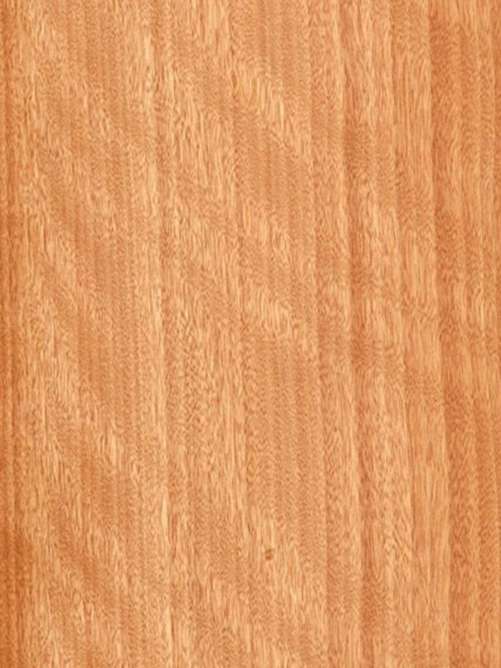 Gaboon is an elegant African wood with a lustrous, natural sheen. It ranges in color from pale pink to reddish-brown and when quarter cut it often produces a beautifully broken stripe or rope figure. This moderately priced veneer comes in logs well-sized for larger architectural projects; figured logs fetch higher prices. Learn About Veneer Cut & Matching
Gaboon is an elegant African wood with a lustrous, natural sheen. It ranges in color from pale pink to reddish-brown and when quarter cut it often produces a beautifully broken stripe or rope figure. This moderately priced veneer comes in logs well-sized for larger architectural projects; figured logs fetch higher prices. Learn About Veneer Cut & Matching -
 This domestic tree, common to the southern US states, is highly prized for its beautiful, erratic grain, fine texture, contrasty colors, and beautiful silky luster. In figured logs, an irregular broken stripe creates an uncommon effect in the quarter cut veneer. Large logs create excellent opportunities to use this beautiful domestic in large-scale projects. Learn About Veneer Cut & Matching
This domestic tree, common to the southern US states, is highly prized for its beautiful, erratic grain, fine texture, contrasty colors, and beautiful silky luster. In figured logs, an irregular broken stripe creates an uncommon effect in the quarter cut veneer. Large logs create excellent opportunities to use this beautiful domestic in large-scale projects. Learn About Veneer Cut & Matching -
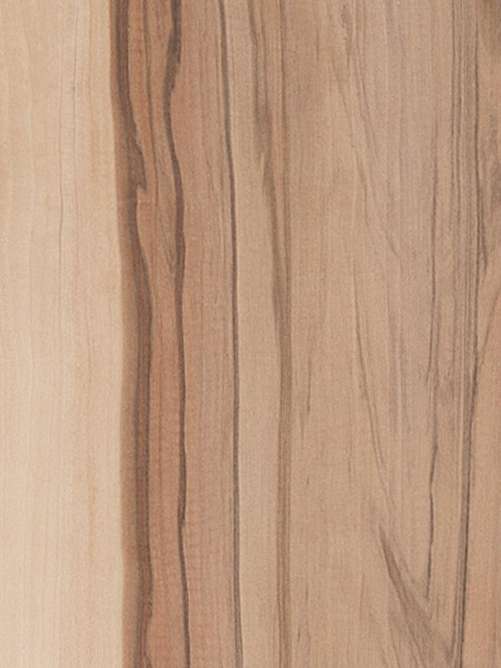 This domestic tree, common to the southern US states, is highly prized for its beautiful, erratic grain, fine texture, contrasty colors, and beautiful silky luster. In figured logs, an irregular broken stripe creates an uncommon effect in the quarter cut veneer. Large logs create excellent opportunities to use this beautiful domestic in large-scale projects. Learn About Veneer Cut & Matching
This domestic tree, common to the southern US states, is highly prized for its beautiful, erratic grain, fine texture, contrasty colors, and beautiful silky luster. In figured logs, an irregular broken stripe creates an uncommon effect in the quarter cut veneer. Large logs create excellent opportunities to use this beautiful domestic in large-scale projects. Learn About Veneer Cut & Matching -
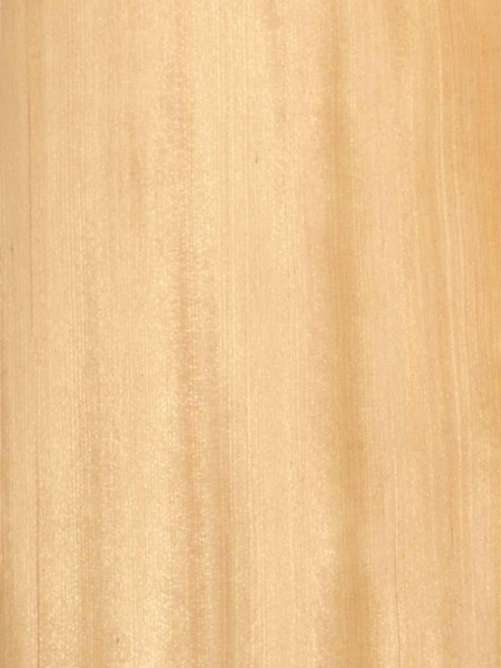 The largest of the hemlocks, this hemlock grows over 300’ tall from the Rockies to the Pacific coast. It has a straight grain, tightly spaced growth rings, somewhat coarse texture, and flat, uniform appearance with little distinction between the heartwood and sapwood. Hemlock takes finishing well and can be stained in virtually any color, making it an adaptable wood for interior projects. Learn About Veneer Cut & Matching
The largest of the hemlocks, this hemlock grows over 300’ tall from the Rockies to the Pacific coast. It has a straight grain, tightly spaced growth rings, somewhat coarse texture, and flat, uniform appearance with little distinction between the heartwood and sapwood. Hemlock takes finishing well and can be stained in virtually any color, making it an adaptable wood for interior projects. Learn About Veneer Cut & Matching -
 While most hickory is cut for lumber due to its strength and density, this traditional domestic beauty is increasingly available in the veneer. Hickory has a notable contrast between its reddish heartwood and lighter sapwood. The grain is usually straight but can be wavy or irregular in some flitches. The texture is coarse and porous with a matte finish. This is a quintessential domestic wood—lively in appearance and rich in American woodworking tradition. Learn About Veneer Cut & Matching
While most hickory is cut for lumber due to its strength and density, this traditional domestic beauty is increasingly available in the veneer. Hickory has a notable contrast between its reddish heartwood and lighter sapwood. The grain is usually straight but can be wavy or irregular in some flitches. The texture is coarse and porous with a matte finish. This is a quintessential domestic wood—lively in appearance and rich in American woodworking tradition. Learn About Veneer Cut & Matching -
 One of the hardest woods in the world, ipé is found throughout Central and South America, although most commercial wood comes from Brazil. While the tree itself is large, defect-free sections for veneers are relatively small. Extremely dark, the colors can vary from reddish-brown to green-black with subtle but distinctive stripes. Flat cut veneer produces the characteristic cathedral grain. Quartered, it can produce a plain or broken stripe figure. Learn About Veneer Cut & Matching
One of the hardest woods in the world, ipé is found throughout Central and South America, although most commercial wood comes from Brazil. While the tree itself is large, defect-free sections for veneers are relatively small. Extremely dark, the colors can vary from reddish-brown to green-black with subtle but distinctive stripes. Flat cut veneer produces the characteristic cathedral grain. Quartered, it can produce a plain or broken stripe figure. Learn About Veneer Cut & Matching -
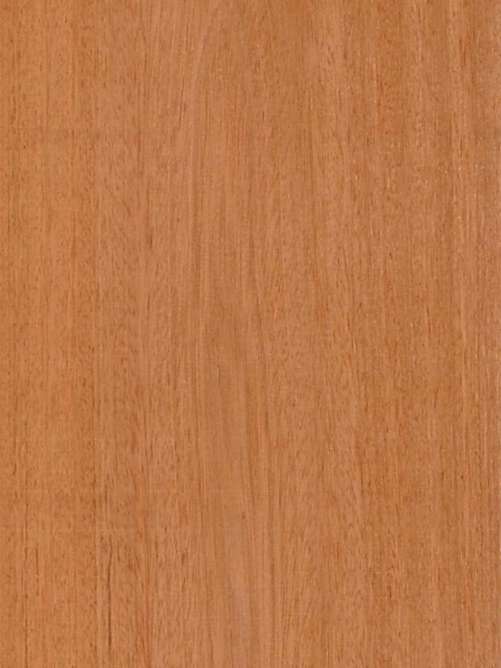 This tropical evergreen grows to impressive heights in consistently cylindrical trunks, making it ideal for veneer production for architectural use. It has an intense, warm, reddish-brown color—much like cherry—with contrasting occasional gray-brown streaks. Jatoba has a medium texture, interlocked grain, and very desirable natural luster. Learn About Veneer Cut & Matching
This tropical evergreen grows to impressive heights in consistently cylindrical trunks, making it ideal for veneer production for architectural use. It has an intense, warm, reddish-brown color—much like cherry—with contrasting occasional gray-brown streaks. Jatoba has a medium texture, interlocked grain, and very desirable natural luster. Learn About Veneer Cut & Matching -
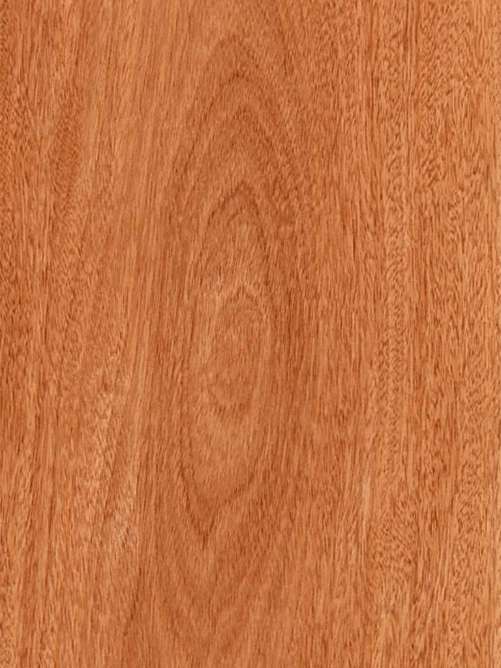 A relative newcomer to the US market, Jequitiba has grown in popularity in the last decade as an alternative to mahogany for rich, traditional interiors. The reddish to purple-brown heartwood, sometimes with dark streaks, varies only subtly from its paler sapwood. It has a medium luster, fine grain, and soft, smooth texture. These large trees produce ample size leaves for large installations. Flat cut, it has a pleasing cathedral figure; quartered wood may be figured. Learn About Veneer Cut & Matching
A relative newcomer to the US market, Jequitiba has grown in popularity in the last decade as an alternative to mahogany for rich, traditional interiors. The reddish to purple-brown heartwood, sometimes with dark streaks, varies only subtly from its paler sapwood. It has a medium luster, fine grain, and soft, smooth texture. These large trees produce ample size leaves for large installations. Flat cut, it has a pleasing cathedral figure; quartered wood may be figured. Learn About Veneer Cut & Matching -
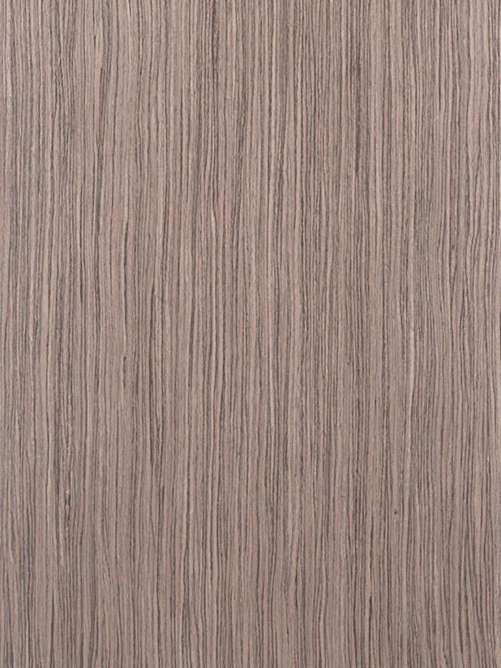 Reconstituted Veneer is a rotary cut veneer created from fast-growing secondary species, then dyed, layered, laminated, and laid up with grain that replicates a natural species. It offers outstanding consistency in color and grain. The pattern for Kalahari was previously owned by an exotic car manufacturer for vehicle interiors and is a one-of-a-kind offering that won’t be produced in the future. This recon veneer is in the grey color range, somewhat resembling Walnut, and can be stained. It is available in 9-foot lengths. Learn About Veneer Cut & Matching
Reconstituted Veneer is a rotary cut veneer created from fast-growing secondary species, then dyed, layered, laminated, and laid up with grain that replicates a natural species. It offers outstanding consistency in color and grain. The pattern for Kalahari was previously owned by an exotic car manufacturer for vehicle interiors and is a one-of-a-kind offering that won’t be produced in the future. This recon veneer is in the grey color range, somewhat resembling Walnut, and can be stained. It is available in 9-foot lengths. Learn About Veneer Cut & Matching -
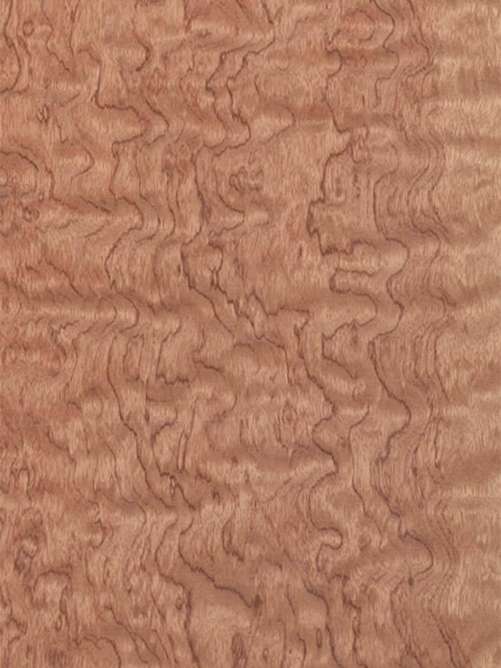 Kevazinga is the name given to Bubinga veneer that has been rotary cut to capitalize on its eccentric grain patterns. This exceptional veneer is red-brown in color; with dark veining, a coarse texture, and a lively, swirly grain interspersed with “peanut” or Pommele markings. Highly sought after for high-end cabinetry and architectural use. Learn About Veneer Cut & Matching
Kevazinga is the name given to Bubinga veneer that has been rotary cut to capitalize on its eccentric grain patterns. This exceptional veneer is red-brown in color; with dark veining, a coarse texture, and a lively, swirly grain interspersed with “peanut” or Pommele markings. Highly sought after for high-end cabinetry and architectural use. Learn About Veneer Cut & Matching -
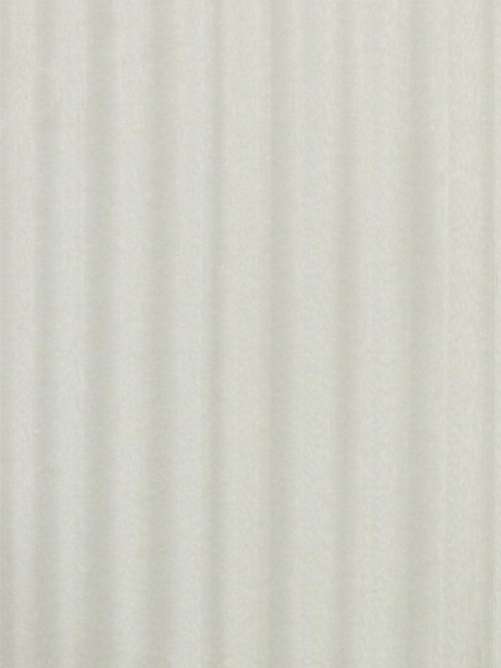 The wood is yellowish-white to cream in color and becomes yellowish-grey when steamed. Sliced veneers are used for door skins and inner surface veneers. The rotary veneer is used for plywood panels and bleaching + dying. Learn About Veneer Cut & Matching
The wood is yellowish-white to cream in color and becomes yellowish-grey when steamed. Sliced veneers are used for door skins and inner surface veneers. The rotary veneer is used for plywood panels and bleaching + dying. Learn About Veneer Cut & Matching -
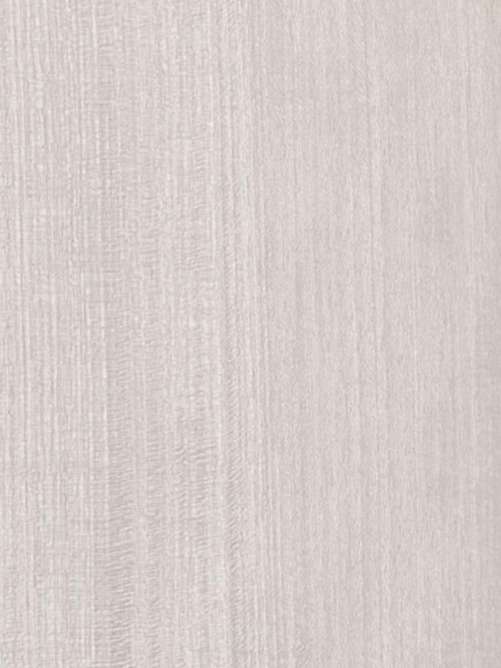 The wood is yellowish-white to cream in color and becomes yellowish-grey when steamed. Sliced veneers are used for door skins and inner surface veneers. The rotary veneer is used for plywood panels and bleaching + dying. Learn About Veneer Cut & Matching
The wood is yellowish-white to cream in color and becomes yellowish-grey when steamed. Sliced veneers are used for door skins and inner surface veneers. The rotary veneer is used for plywood panels and bleaching + dying. Learn About Veneer Cut & Matching -
 Lacewood is an uncommon veneer with conspicuous flecking that resembles lace when quarter cut. Reddish-brown with a silvery sheen, this striking veneer has a straight grain and small flake–the result of cutting through the medullary ray, which is especially pronounced in the species. Lacewood is always quarter cut and can be fumed to a rich chocolate brown. Learn About Veneer Cut & Matching
Lacewood is an uncommon veneer with conspicuous flecking that resembles lace when quarter cut. Reddish-brown with a silvery sheen, this striking veneer has a straight grain and small flake–the result of cutting through the medullary ray, which is especially pronounced in the species. Lacewood is always quarter cut and can be fumed to a rich chocolate brown. Learn About Veneer Cut & Matching -
 Lacewood is an uncommon veneer with conspicuous flecking that resembles lace when quarter cut. Reddish-brown with a silvery sheen, this striking veneer has a straight grain and small flake–the result of cutting through the medullary ray, which is especially pronounced in the species. Lacewood is always quarter cut and can be fumed to a rich chocolate brown. Learn About Veneer Cut & Matching
Lacewood is an uncommon veneer with conspicuous flecking that resembles lace when quarter cut. Reddish-brown with a silvery sheen, this striking veneer has a straight grain and small flake–the result of cutting through the medullary ray, which is especially pronounced in the species. Lacewood is always quarter cut and can be fumed to a rich chocolate brown. Learn About Veneer Cut & Matching


